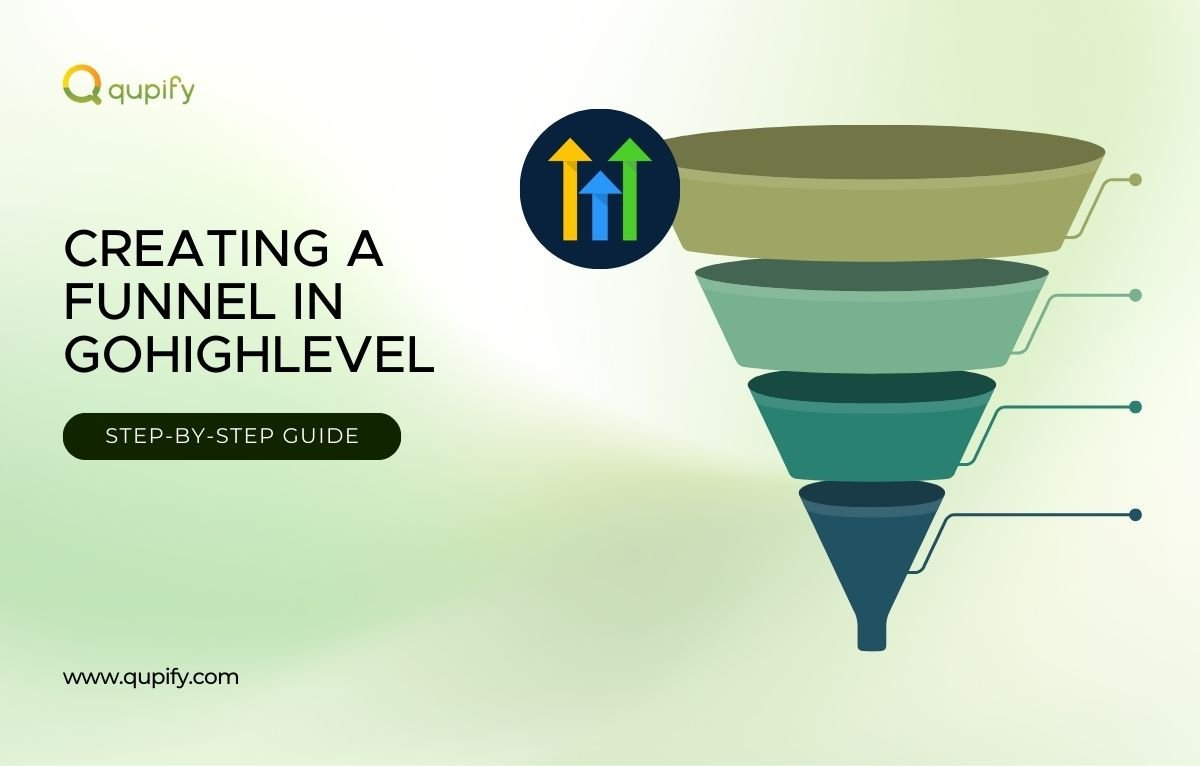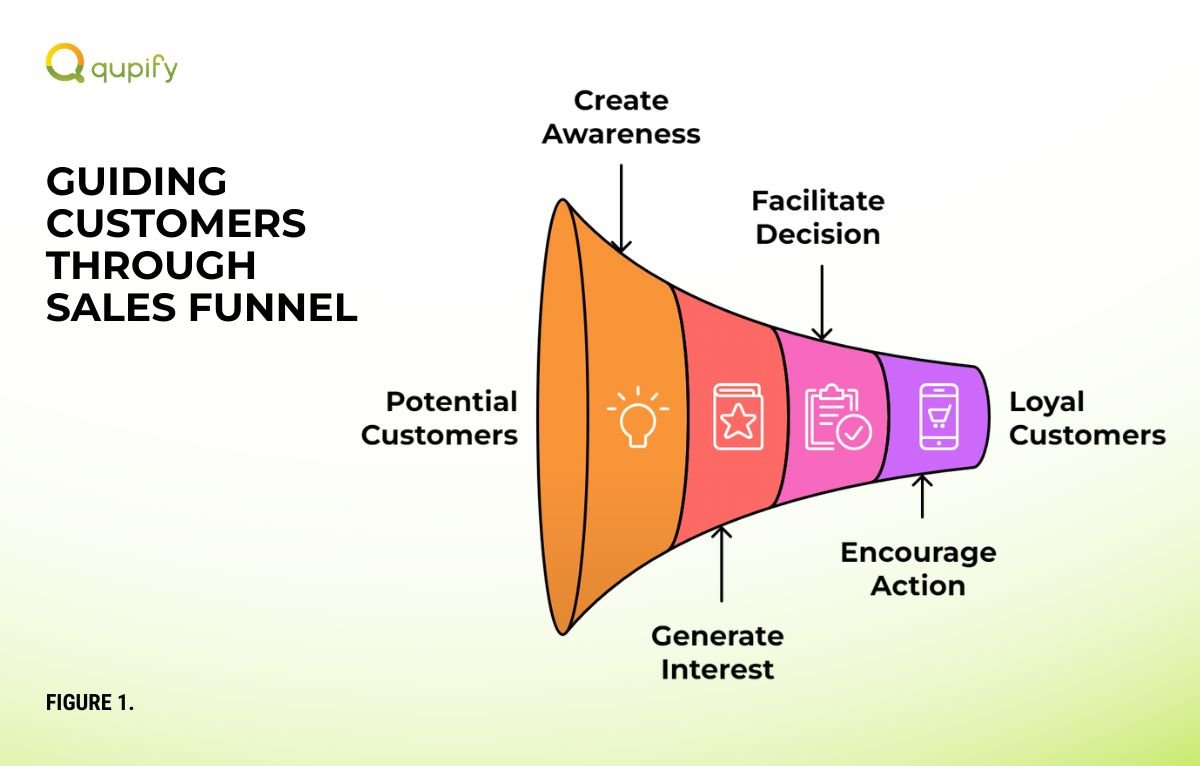Step-by-Step Guide to Creating a Funnel in GoHighLevel
A sales funnel is one of the most important tools for any business looking to grow and succeed.
It helps businesses guide potential customers step by step, turning interest into action. Without a funnel, leads may lose interest or get overwhelmed and leave before making a purchase.
Funnels simplify the customer journey, ensuring every stage is clear and focused on what the customer needs.
Businesses need funnels to save time, focus on qualified leads, and make the marketing process more efficient. By using a funnel, you can communicate better, build trust, and increase your chances of closing a sale.
A good funnel nurtures leads and encourages them to take action, whether that’s signing up for a service, buying a product, or scheduling a call.
GoHighLevel makes building a funnel easier with its user-friendly design and automation tools.
It’s a platform designed to streamline the process, offering everything you need to set up a funnel that works for your business.

Stages of a Sales Funnel
A sales funnel is a system that leads people through the buying process. The goal of a funnel is to guide potential customers through each stage smoothly.
This approach not only improves customer experience but also helps you manage your leads effectively, increasing the chances of turning visitors into loyal customers.
It typically has four stages:
Stage 1: Awareness
Awareness is the first stage where potential customers come across your business for the first time. This can happen through various channels such as social media, blog posts, online ads, or word of mouth.
At this stage, the goal is to grab attention and make your brand memorable. Strong messaging and visuals help create a positive first impression, encouraging prospects to learn more.
Stage 2: Interest
Interest is where prospects start engaging with your content and exploring your offerings. They may sign up for a newsletter, attend a webinar, or download a free resource to learn more.
This stage is crucial for building trust and demonstrating how your product or service addresses their needs. Offering valuable, educational content ensures you stay on their radar.
Stage 3: Decision
In the decision stage, prospects evaluate your product or service to determine if it fits their needs. They may compare your offerings to competitors, look for testimonials, or request a demo.
This is the time to provide social proof, such as reviews or case studies, and address any objections they may have. Incentives like discounts or free trials can also help nudge them toward making a choice.
Stage 4: Action
Action is the final stage where the prospect takes the desired step, such as making a purchase or signing up for a service. This is where a clear and compelling call-to-action is critical to guide them.
Ensuring a seamless checkout process and addressing last-minute concerns, like return policies or support, can prevent cart abandonment. Follow-up communication, like a thank-you email, can reinforce their decision and encourage future loyalty.

How to Create a Funnel in GoHighLevel
Step 1: Accessing the Funnel Builder
Log in to your GoHighLevel account and navigate to the dashboard. Click on the “Funnels” section to get started.
Step 2: Creating a New Funnel
Click on “Create New Funnel” to begin. Select a template that fits your goals, or start from scratch for a fully customized design. Tailor your choice based on the specific needs of your campaign.
Step 3: Designing Funnel Pages
Use the drag-and-drop editor to easily add text, images, forms, and buttons. Customize the colors, fonts, and layouts to match your brand’s style. Make adjustments to create a design that aligns with your goals.
Step 4: Setting Up Funnel Steps
Add and arrange pages for your funnel, such as a Landing Page to introduce your offer, a Thank You Page to confirm actions and an optional Upsell Page for additional services or products. Ensure each page is linked in a clear, logical sequence. This creates a smooth flow that guides users effortlessly through the funnel.
Step 5: Integrating Forms and Collecting Leads
Include a form to gather details such as names, emails, or phone numbers. Link the form to your CRM to streamline lead tracking and management. This ensures all collected information is organized and accessible.
Step 6: Configuring Automation and Follow-Ups
Configure automated emails or text messages to engage and nurture your leads. Set triggers to send follow-ups based on specific user actions, like signing up or clicking a link. This keeps your communication timely and relevant.
Step 7: Testing and Publishing the Funnel
Test your funnel thoroughly to ensure all links, forms, and buttons function correctly. Once everything is working smoothly, publish the funnel and begin driving traffic to it. This ensures a seamless experience for your users.
Benefits of Using a Sales Funnel
A sales funnel is a simple way to guide potential customers through their buying journey. It helps businesses connect with people at the right time with the right message.
By meeting customer needs at each step, a sales funnel makes it easier to turn visitors into buyers.
It’s a helpful tool for getting leads, building trust, and making sales more smoothly and efficiently.
Improved Lead Management
A sales funnel helps organize and track potential customers at different stages of their journey. This ensures you focus on nurturing the right leads with tailored messages.
By understanding where each prospect stands, you can deliver targeted solutions to move them closer to a purchase. It makes the entire process more efficient and reduces wasted effort on uninterested leads.
Higher Conversion Rates
By addressing customer needs at each stage, a sales funnel increases the likelihood of turning leads into paying customers.
With strategies like personalized follow-ups and clear call-to-action, prospects feel guided and supported. It minimizes drop-offs by addressing pain points and providing value.
This structured approach helps you convert more visitors into loyal buyers.
Streamlined Marketing Efforts
A sales funnel provides clarity and focus for your marketing campaigns. You can create specific content and offers for each stage, eliminating guesswork.
This ensures that your time and resources are spent on strategies that bring the best results. It also helps align your sales and marketing teams for a more cohesive approach.
Better Customer Experience
A well-designed sales funnel ensures that prospects receive the right information at the right time. This personalized approach makes them feel understood and valued.
It reduces confusion and builds trust, making it easier for them to move forward with confidence. Happy customers are more likely to recommend your business and return for future purchases.
Increased Revenue and Business Growth
By guiding prospects through a structured journey, a sales funnel maximizes the chances of closing deals. Upsell opportunities, like offering complementary products, can further boost revenue.
A clear funnel also provides insights into areas for improvement, helping you refine your strategy over time. This leads to sustainable growth and long-term success.
Conclusion
In today’s competitive market, a sales funnel is an essential tool for businesses to attract, nurture, and convert potential customers. By guiding people step by step, it simplifies the buying process and improves the chances of success.
Whether you’re new to funnels or looking to improve your current strategy, focusing on each stage and addressing customer needs can make a big difference.
Start building your sales funnel today to grow your business and create a better experience for your customers.



